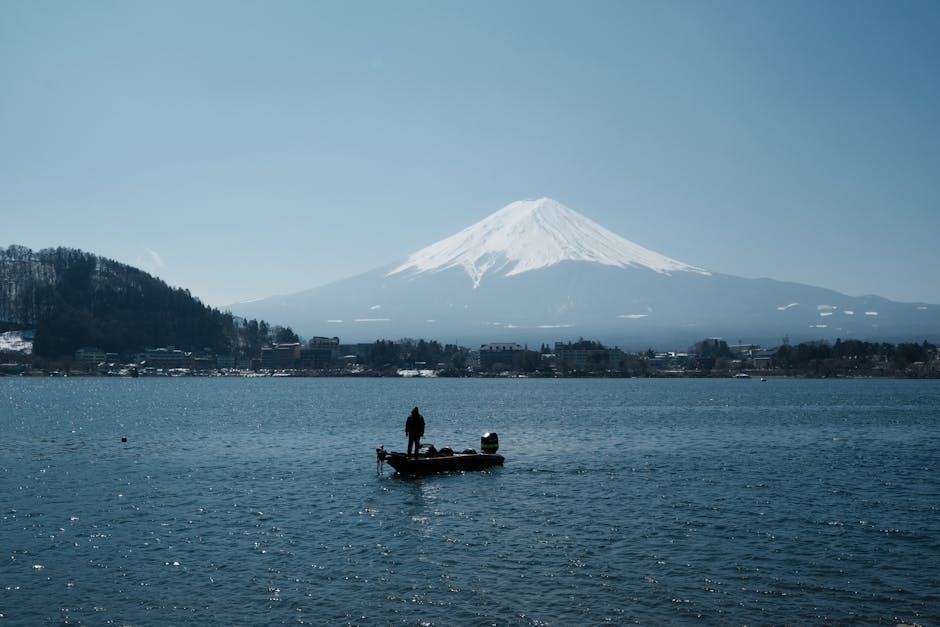Which Country Sparks the Most Debate in Japan? A Design-Lover's Perspective

Which Country Sparks the Most Debate in Japan? A Design-Lover's Perspective
Ah, the delicate question of international relations! As someone deeply immersed in the aesthetics of Japanese culture, I'm fascinated by the subtle nuances of how Japan interacts with the world. While "hate" is a strong word, and not one I'd readily apply to the Japanese psyche, it's true that certain historical and political tensions exist. Let's explore, with a design-lover's eye for detail and harmony, which countries sometimes find themselves in a less-than-zen relationship with Japan. We'll aim for understanding, not judgment, as we unpack this complex topic.
It's important to immediately state that painting an entire nation with one broad brushstroke of "hate" is fundamentally flawed. Public opinion is nuanced and varied. However, exploring historical grievances and contemporary geopolitical friction can shed light on potential tensions. In this context, we can identify countries with whom Japan has experienced particularly challenging relationships. It's less about "hate" and more about acknowledging the existence of unresolved issues that can influence public perception.
Korea: A History Etched in Shared Struggles and Lingering Resentments

The Korean peninsula, both North and South, holds a particularly complex place in the Japanese historical consciousness. Centuries of interaction, marked by periods of cultural exchange and unfortunately, periods of painful colonization, have created a deeply intertwined relationship. While there's immense respect for Korean culture – the clean lines of Korean pottery, the bold colors in traditional Hanboks – historical grievances often overshadow the beauty. Let's break it down:
Historical Baggage:
- Colonial Era: The Japanese colonial period (1910-1945) remains a significant point of contention. The forced assimilation policies, suppression of Korean language and culture, and the exploitation of resources left deep scars. This period is not just history; it's a living wound for many Koreans.
- Comfort Women: The issue of "comfort women" – women forced into sexual slavery during World War II – continues to be a major source of friction. Disagreements over acknowledgement, apology, and compensation persist.
- Textbook Controversies: Japanese history textbooks, which some Koreans believe downplay or whitewash Japan's wartime atrocities, regularly spark outrage.
Contemporary Tensions:
- Territorial Disputes: The Liancourt Rocks (known as Takeshima in Japan and Dokdo in Korea) are a group of islands claimed by both countries. This territorial dispute fuels nationalistic sentiments on both sides.
- Trade Disputes: Economic tensions occasionally flare up, often related to historical issues.
- Historical Revisionism: Perceived attempts to revise or deny historical events related to the colonial period continue to anger Koreans.
Despite these issues, it's crucial to remember the deep cultural connections between the two nations. K-pop and K-dramas are wildly popular in Japan, and Japanese anime and manga have a huge following in Korea. Many Japanese people are fascinated by Korean cuisine and fashion. This complex tapestry of shared history, cultural exchange, and unresolved grievances makes the Japan-Korea relationship a fascinating and sometimes turbulent one. From a design perspective, we can see the echoes of each culture in the other – a testament to their intertwined past.
China: A Giant with a Long Memory

China, another historical giant in the region, also shares a complex relationship with Japan. Like Korea, the shadow of World War II looms large. But beyond the historical grievances, contemporary geopolitical and economic realities further complicate the picture. Think of it like contrasting design philosophies: the minimalist zen of Japanese design sometimes clashes with the bolder, more assertive lines of Chinese aesthetic.
Historical Baggage:
- The Second Sino-Japanese War: The brutal conflict of the 1930s and 1940s, marked by atrocities like the Nanjing Massacre, left a deep and lasting impact on Chinese society.
- Territorial Disputes: The Senkaku/Diaoyu Islands, a group of uninhabited islands in the East China Sea, are claimed by both Japan and China, leading to frequent maritime standoffs and heightened tensions.
Contemporary Tensions:
- Geopolitical Rivalry: Both countries are major players in the region, vying for influence in Asia and beyond. This competition extends to areas like trade, technology, and military power.
- Economic Competition: The two economies are deeply intertwined, but also compete fiercely in global markets.
- Historical Narratives: Differing interpretations of historical events continue to fuel mistrust.
- Taiwan: Japan's relationship with Taiwan, which China considers a renegade province, is a sensitive issue.
While historical grievances and geopolitical rivalry contribute to tensions, economic interdependence and cultural exchange also play a significant role. Chinese tourists are a significant source of revenue for the Japanese tourism industry, and Japanese brands are popular in China. The shared cultural heritage – calligraphy, tea ceremony, and many other art forms – provides a foundation for potential understanding, even amidst disagreements. From a design perspective, observing how these two cultures adapt and reinterpret each other's aesthetic is endlessly fascinating.
Russia: A Northern Neighbor with a Complicated Past

Russia, or rather, the Soviet Union, played a role in the final days of World War II, declaring war on Japan shortly before the end of the conflict. However, the biggest point of contention lies in the territorial dispute over the Kuril Islands (known as the Northern Territories in Japan). The islands were seized by the Soviet Union at the end of the war, and Japan still claims them. This issue has prevented the two countries from signing a formal peace treaty to end World War II.
Key Issues:
- Territorial Dispute: The dispute over the Kuril Islands/Northern Territories is the central issue. Japan insists on the return of the four southernmost islands, while Russia maintains its sovereignty.
- World War II Peace Treaty: The absence of a formal peace treaty due to the territorial dispute continues to hinder relations.
- Geopolitical Considerations: Russia's strategic interests in the region also play a role in the relationship.
While the territorial dispute remains a significant obstacle, there are also areas of potential cooperation, such as energy development and trade. However, the lack of resolution to the territorial issue continues to cast a long shadow over Japan-Russia relations. In terms of design, the stark contrast between the minimalist elegance of Japanese aesthetics and the grandiosity often associated with Russian design reflects the divergent worldviews that sometimes impact their relationship.
A Design Enthusiast's Hope for Harmony

As someone who appreciates the beauty and intricacy of Japanese culture, I believe that understanding, dialogue, and a willingness to acknowledge the past are essential for building stronger relationships with neighboring countries. While historical grievances and geopolitical tensions may persist, fostering cultural exchange, promoting economic cooperation, and engaging in open and honest dialogue can help bridge the divides. Like carefully arranging a ikebana (flower arrangement), international relations require patience, skill, and a deep understanding of the underlying elements to create a harmonious composition.
It's crucial to remember that public opinion is not monolithic. While some individuals may harbor negative feelings towards certain countries, many others are open to building bridges and fostering mutual understanding. Focusing on shared values, common interests, and the potential for collaboration can help pave the way for a more peaceful and prosperous future. The power of cultural exchange, from the appreciation of Korean cinema to the popularity of Japanese manga, demonstrates the human capacity to connect beyond political borders.
Ultimately, the question of which country the Japanese "hate" is a loaded one. It's more accurate to say that Japan has complex and often challenging relationships with certain countries, particularly those with whom it shares a history of conflict or territorial disputes. However, these relationships are not static, and there is always the potential for improvement through dialogue, understanding, and a commitment to building a more peaceful and harmonious future. And perhaps, by focusing on the beautiful elements each culture has to offer, we can find a common ground for fostering understanding and appreciation.
So, while there aren't definitive answers, exploring the historical and political context surrounding Japan's relationships with its neighbors offers valuable insights into the complexities of international relations. And for a design enthusiast like myself, it provides a fascinating lens through which to view the interplay of culture, history, and geopolitics.
Post a Comment